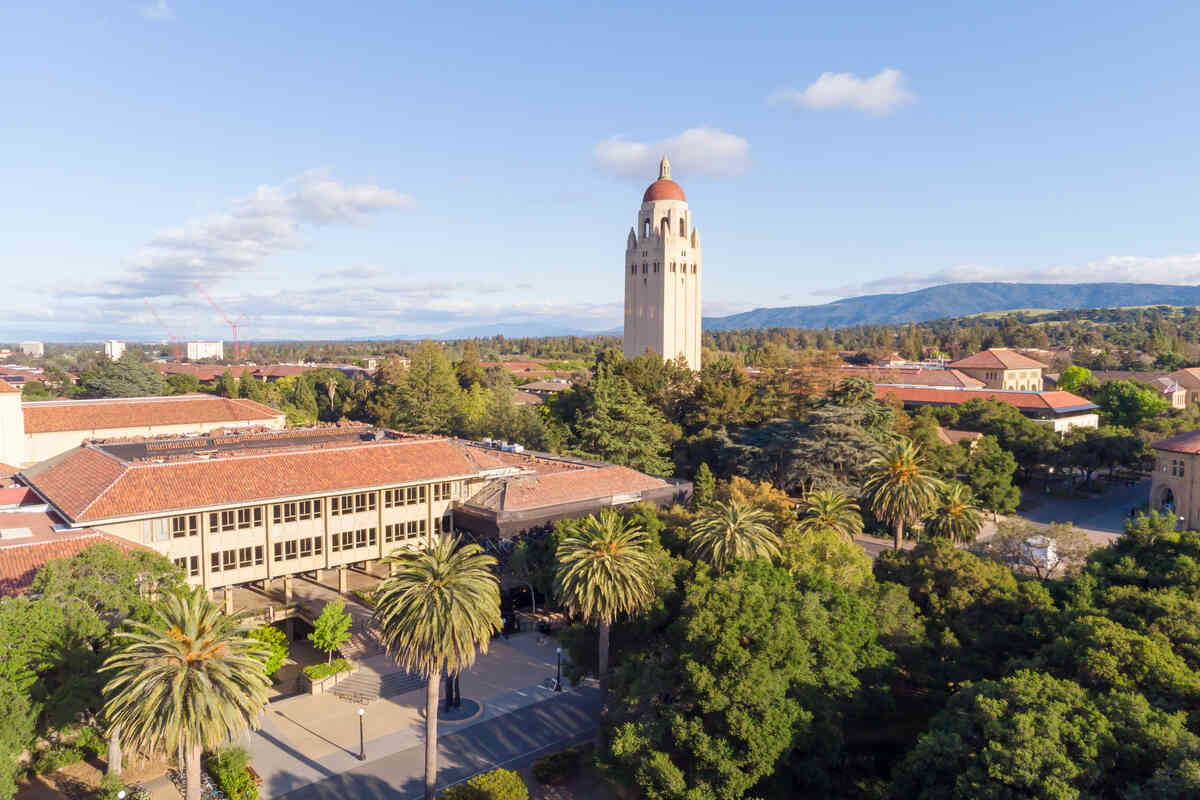Universities are at the heart of global innovation, research and economic development, serving as catalysts for progress in technology, industry and society. The world’s top institutions not only produce groundbreaking discoveries and research but also develop the next generation of leaders, entrepreneurs and policymakers.
The influence of universities extends far beyond academia, shaping global economies, fostering cross-border collaborations and driving investment in emerging industries and regions. For businesses and investors, university rankings provide valuable insights into centers of excellence in education and research.
Companies seek partnerships with leading institutions to tap into their cutting-edge innovations and talent. Meanwhile, governments use these rankings as a guide and global benchmarks for policymakers and government officials, supporting decisions on resource allocation, educational policies and programs and funding.
The world’s top universities often become hubs for startups, multinational research collaborations and key policy discussions, reinforcing their significance on the world stage.
Top 30 universities in the world in 2025
According to the QS World University Rankings 2025, the top 30 universities in the world this year include:
1. Massachusetts Institute of Technology (MIT) – Cambridge, United States
MIT has consistently ranked among the best universities in the world and as the world’s best university for technology and engineering. Several factors contribute to MIT’s consistent top ranking in global university rankings including its cutting-edge research and innovation, strong industry and government partnerships, and entrepreneurial ecosystem.
MIT maintains close collaborations with top companies like Google, Apple, Boeing and Tesla, and government agencies like NASA, DARPA and the U.S. Department of Energy. These partnerships fuel research, provide funding and create opportunities for students and faculty to work on real-world challenges.
It also has one of the most successful entrepreneurial ecosystems in the world, with alumni founding companies like Intel, Dropbox and Moderna.
2. Imperial College London – London, United Kingdom
Imperial College London consistently ranks among the world’s top universities due to its strengths in science, engineering, medicine and business. Located in the heart of London, Imperial is a global leader in research, innovation and education, with a strong emphasis on tackling real-world challenges.
With world-class research facilities and strong industry collaborations, Imperial plays a crucial role in pioneering breakthroughs in fields like artificial intelligence, climate change, nanotechnology, and medical sciences.
Imperial graduates are highly sought after by employers worldwide. Its strong connections with leading tech firms, investment banks, pharmaceutical giants and engineering companies ensure that students transition seamlessly into successful careers.
3. University of Oxford – Oxford, United Kingdom
The University of Oxford is one of the most prestigious and influential institutions of higher learning, known for its unparalleled academic excellence, world-class research and centuries-old tradition of intellectual leadership. There is no clear date of when the university was founded but teaching existed at Oxford in some form in 1096.
Oxford consistently ranks among the top universities due to its rigorous academic programs, distinguished faculty and exceptional research. It offers a unique tutorial-based teaching system, where students engage in one-on-one or small-group discussions with leading scholars, fostering deep analytical thinking and intellectual independence.
Oxford has educated numerous world leaders, Nobel Prize winners, and influential figures, including 28 British Prime Ministers, at least 30 international leaders, 55 Nobel Prize winners, and 120 Olympic medal winners. Its alumni hold key positions in governments, corporations and international organizations, shaping policy and driving innovation worldwide.
4. Harvard University – Cambridge, United States
Harvard University is widely recognized as one of the most prestigious and influential institutions of higher learning, consistently ranking among the top universities in the world.
Founded in 1636, it is the oldest university in the United States and has consistently set the standard for academic excellence, research impact and leadership development. Harvard’s influence spans education, business, law, medicine and politics, making it a powerhouse of global innovation and thought leadership.
Harvard has educated eight U.S. presidents, including Barack Obama, Franklin D. Roosevelt, and John F. Kennedy, as well as numerous heads of state, Supreme Court justices, and global business leaders. Harvard Law School (HLS) produces some of the world’s most influential lawyers, judges and policymakers, while its Medical School is a global leader in biomedical research, contributing to breakthroughs in cancer treatments, genetics and neuroscience.
With an endowment exceeding $50 billion, the world’s largest, Harvard has vast financial resources to support research, scholarships, faculty development and campus expansion.
5. University of Cambridge – Cambridge, United Kingdom
Founded in 1209, the University of Cambridge is one of the oldest and most prestigious universities in the world. Cambridge has played a pivotal role in shaping global knowledge, producing groundbreaking research and educating some of history’s greatest minds.
Cambridge is known for its rigorous academic environment and unique tutorial-based teaching system, similar to Oxford’s, where students receive personalized guidance from top scholars. The university excels across multiple disciplines, including science, engineering, medicine, humanities and social sciences, consistently ranking among the top in the world.
The Cambridge Science Park—Europe’s oldest science park—hosts cutting-edge startups and multinational firms, facilitating collaboration between academia and industry.

6. Stanford University – Stanford, United States
7. ETH Zurich – Zürich, Switzerland
8. National University of Singapore (NUS) – Singapore, Singapore
9. UCL – London, United Kingdom
10 California Institute of Technology (Caltech) – Pasadena, United States
11. University of Pennsylvania – Philadelphia, United States
12. University of California, Berkeley (UCB) – Berkeley, United States
13. The University of Melbourne – Parkville, Australia
14. Peking University – Beijing, China
15. Nanyang Technological University, Singapore (NTU Singapore) – Singapore
16. Cornell University – Ithaca, United States
17. The University of Hong Kong – Hong Kong
18. The University of Sydney – Sydney, Australia
19. The University of New South Wales (UNSW Sydney) – Sydney, Australia
20. Tsinghua University – Beijing, China
Other leading universities:
21. University of Chicago – Chicago, United States
22. Princeton University – Princeton, United States
23. Yale University – New Haven, United States
24. Université PSL – Paris, France
25. University of Toronto – Toronto, Canada
26. EPFL – École polytechnique fédérale de Lausanne – Lausanne, Switzerland
27. The University of Edinburgh – Edinburgh, United Kingdom
28. Technical University of Munich – Munich, Germany
29. McGill University – Montreal, Canada
30. Australian National University (ANU) – Canberra, Australia
Regional highlights
The top five universities in each region include:
Top universities in the U.S.:
- Massachusetts Institute of Technology (MIT)
- Harvard University
- Stanford University
- California Institute of Technology (Caltech)
- University of Pennsylvania
Top universities in Europe:
- Imperial College London
- University of Oxford
- University of Cambridge
- ETH Zürich
- University College London (UCL)
Top universities in the Arab world:
- King Fahd University of Petroleum & Minerals – Saudi Arabia
- Qatar University – Qatar
- King Saud University – Saudi Arabia
- Khalifa University of Science and Technology – UAE
- United Arab Emirates University – UAE
Top universities in Asia:
- National University of Singapore (NUS)
- Peking University, China
- Nanyang Technological University, Singapore (NTU), Singapore
- The University of Hong Kong
- Tsinghua University
Top universities in Latin America:
- Universidad de Buenos Aires (UBA)
- Universidade de São Paulo
- Pontificia Universidad Católica de Chile (UC)
- Universidad Nacional Autónoma de México (UNAM)
- Universidad de Chile
Top universities in Africa:
- University of Cape Town
- University of Witwatersrand
- Stellenbosch University
- University of Johannesburg
- Cairo University
Top universities in Oceana:
- The University of Melbourne
- The University of Sydney
- The University of New South Wales (UNSW Sydney)
- Australian National University (ANU)
- Monash University
How universities are ranked
To come up with their ranking, the QS World University Rankings collects data from 16.4 million academic papers and gathers insights from over 151,000 academics and 100,000 employers. It focuses on key factors like teaching quality, research effect, international outlook, and industry engagement.
Teaching quality: Teaching quality comprises academic reputation and faculty quality and is the cornerstone of a university’s reputation. Academic reputation indicates the institution’s esteem within the academic community; faculty quality encompasses faculty-to-student ratio, qualifications, experience and teaching effectiveness.
Research effect: Research is a main driver of a university’s global standing and innovation capacity and includes research quality and impact. Research quality pertains to the rigor and depth of academic inquiry, including the soundness of methodologies and originality of findings; research impact measures the influence of a university’s research publications.
International outlook: Universities strive for a diverse, globally connected learning environment, which is measured by the number of international students and faculty at the institution. A higher proportion of international students and faculty enhances cultural exchange, broadens perspectives and creates a more cosmopolitan academic community.
Industry engagement: Close collaboration with industry enhances the relevance and applicability of academic programs and research outcomes. An extensive industry network creates opportunities for internships and job placements, providing students with valuable connections and resources to kickstart their careers. Strong placement numbers indicate the ability of universities to prepare students for a successful career, while joint industry-university projects and patents indicate a high level of innovation and knowledge transfer between academia and industry.
The economic impact of the world’s top universities
The world’s universities are not just centers of learning; they are powerful economic engines that drive global innovation, workforce development and business growth. From contributing to national GDP to fostering cutting-edge research and industry collaborations, top institutions play a crucial role in shaping modern economies.
The top universities contribute significantly to national and global economies through various channels:
- Job creation: Universities employ thousands of faculty, researchers and administrative staff, while also supporting secondary industries such as housing, retail and technology.
- Student and research spending: International students alone contribute billions of dollars annually to local economies through tuition fees, accommodation and living expenses.
- Entrepreneurship and startups: Universities like MIT, Stanford, and Cambridge have been instrumental in launching multibillion-dollar companies, fueling economic growth and job markets.
Furthermore, collaboration between the world’s top universities and the private sector accelerates the commercialization of research, transforming ideas into market-ready technologies.
Some notable examples include Silicon Valley and Stanford University. Stanford’s close ties with tech giants like Google, Apple and Tesla have made it a key driver of Silicon Valley’s innovation ecosystem. Meanwhile, Cambridge Science Park is a high-tech cluster that fosters partnerships between academia and industry, leading to major breakthroughs in biotech, engineering and AI.
Choosing the right university: Key factors to consider
Choosing the right university is one of the most important decisions for students, shaping their academic journey, career prospects and personal development. With thousands of institutions worldwide, making the best choice requires careful evaluation of several important factors.
1. Academic reputation and rankings
A university’s reputation reflects the quality of its teaching, faculty and research output. Institutions that rank highly in global rankings such as the QS World University Rankings, Times Higher Education (THE) and Academic Ranking of World Universities (ARWU) offer superior academic programs and global recognition. However, rankings should be considered alongside other factors like faculty expertise, program accreditation and student satisfaction.
2. Employability outcomes and alumni success
Another major factor to consider is employability after graduation. A university’s ability to prepare students for the job market is a crucial consideration. Some key indicators to look at while choosing a university are:
- Graduate employment rates and starting salaries.
- Strong career services offering internships, networking and job placements.
- Successful alumni networks that provide mentorship and career connections.
The top universities in the world like Harvard, Oxford and Stanford have extensive global alumni networks that help graduates secure leadership roles in business, politics and research.
3. Research opportunities and industry partnerships
For students interested in cutting-edge research and innovation, choosing a university with strong research funding and industry collaborations is vital. Leading institutions work closely with global tech firms, healthcare organizations and governments to drive advancements in AI, biotechnology, engineering and sustainability.
Universities like MIT, Cambridge and UC Berkeley provide students with hands-on research experience, leading to innovative patents and startup ventures.
4. Tuition fees, scholarships and financial aid
Higher education can be a major financial investment, so it’s essential to consider tuition costs, the availability of scholarships for merit-based or need-based students, and financial aid options, including grants, loans and work-study programs. Many universities offer generous financial aid packages to attract talented students from diverse backgrounds.
Read: GCC universities make historic ranking gains in 2025, advancing towards global recognition
FAQs about the top universities in the world
What is the best university for business and finance?
According to Times Higher Education, the best universities in business, economics and finance include: MIT, University of Oxford, Stanford University, Peking University and University of Cambridge.
The MSc Financial Economics degree at Oxford is ranked as the world’s best master’s in finance degree. HEC Paris’s Master in International Finance is ranked in second place, while MIT has the distinction of being the best master’s in finance degree in the US, having ranked third globally.
How do university rankings impact employability?
University rankings influence employability by signaling academic excellence, research strength and industry relevance, making graduates more attractive to top employers. Highly ranked universities often have strong alumni networks, employer partnerships and career support services that provide students with better job placement opportunities. However, while rankings can enhance a graduate’s resume, skills, experience and networking play an equally crucial role in securing employment.
Which universities have the most Nobel Prize winners?
Harvard University holds the distinction of having the most Nobel Laureates on its faculty. Having long retained a position as one of the world’s best universities for studying economics, Harvard University boasts an impressive lineup of Nobel Laureates in economics on its faculty. The most recent recipient of the prize, Claudia Goldin was awarded the prize in 2023 for having advanced our understanding of women’s labour market outcomes.
What are the top universities in the UAE?
In 2025, the top five universities in the UAE are Khalifa University, United Arab Emirates University, American University of Sharjah, University of Sharjah and Ajman University.
How do universities contribute to economic growth?
Universities drive economic growth by fostering innovation through research, producing a highly skilled workforce and supporting entrepreneurship. They collaborate with industries to develop cutting-edge technologies, attract investments and create high-value jobs. Additionally, universities contribute to local and national economies through student spending, employment generation and partnerships with businesses and governments.













